Maki & Associates’ design the new Aga Khan Centre in London
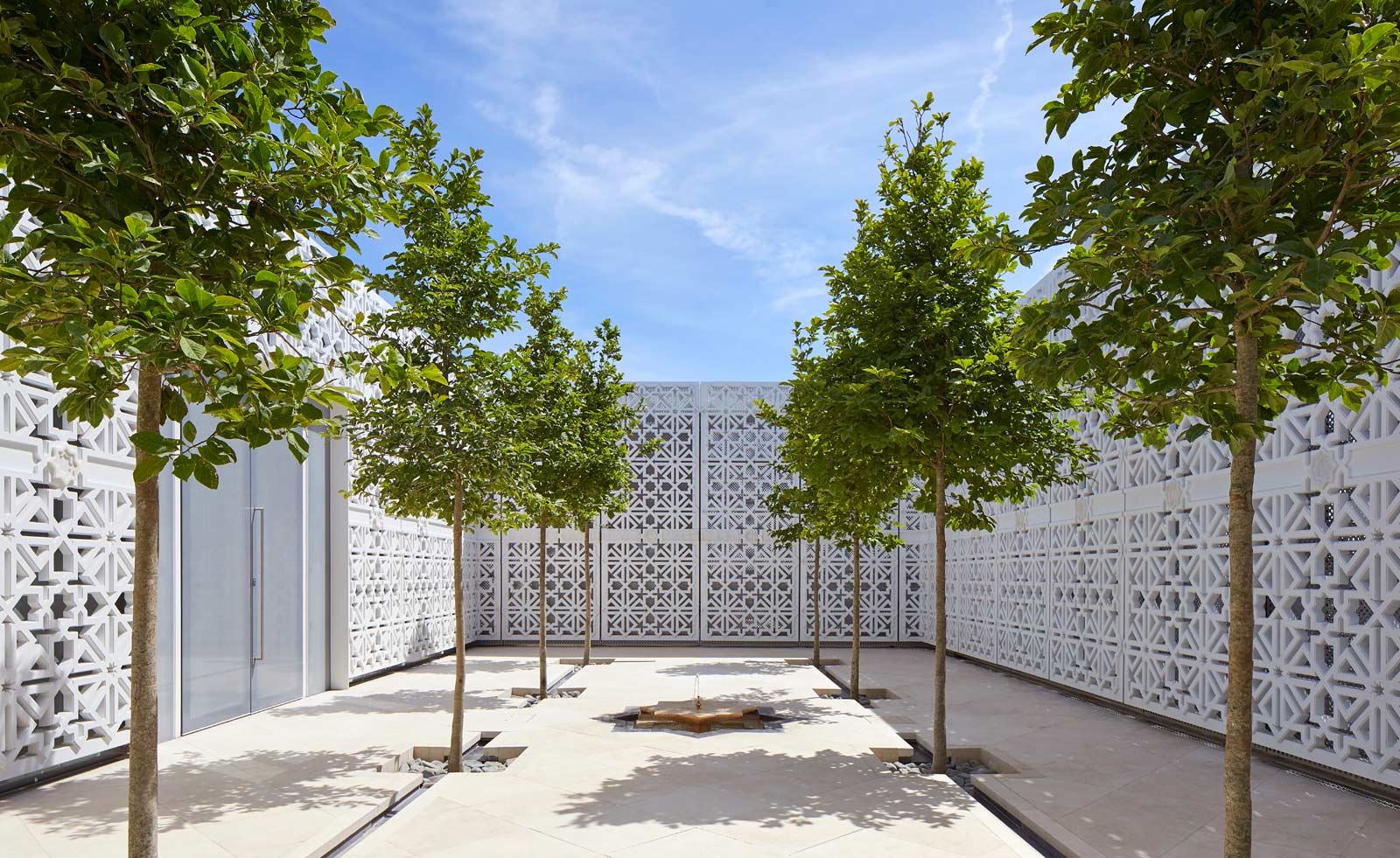
Maki & Associates, led by Fumihiko Maki, has designed a new London headquarters for the Aga Khan Foundation, the Aga Khan Centre in Kings Cross. The Pritzker prize-winning architecture practice cut out a series of Islamic courtyards and gardens from a ten-storey block providing offices, a library and exhibition space. With its light-coloured limestone facade, modern engineering and unique sheltered spaces for reflection, the architecture promotes openness and contemplation through its form.
The building brings the Institute of Ismaili Studies, the Aga Khan University, the Institute for the Study of Muslim Civilisations and the Aga Khan Foundation UK together, after existing for 40 years in London at various locations, in their joint mission to open up a dialogue and understanding of Muslim cultures. A new library at the centre of the building provides a home for the centres’ unique collections of books and manuscripts.
As well as a standard brief of practical requirements, the Aga Khan, the 49th hereditary Imam of the Shi’a Imami Ismaili Muslims, delivered a handwritten letter that was a conceptual brief for the architects, creatively written from the heart. He expressed his hopes of what the Aga Khan Centre could provide for its inhabitants, specifying a ‘network of unique rooftop spaces’ that could communicate the teachings and essence of Islamic culture.
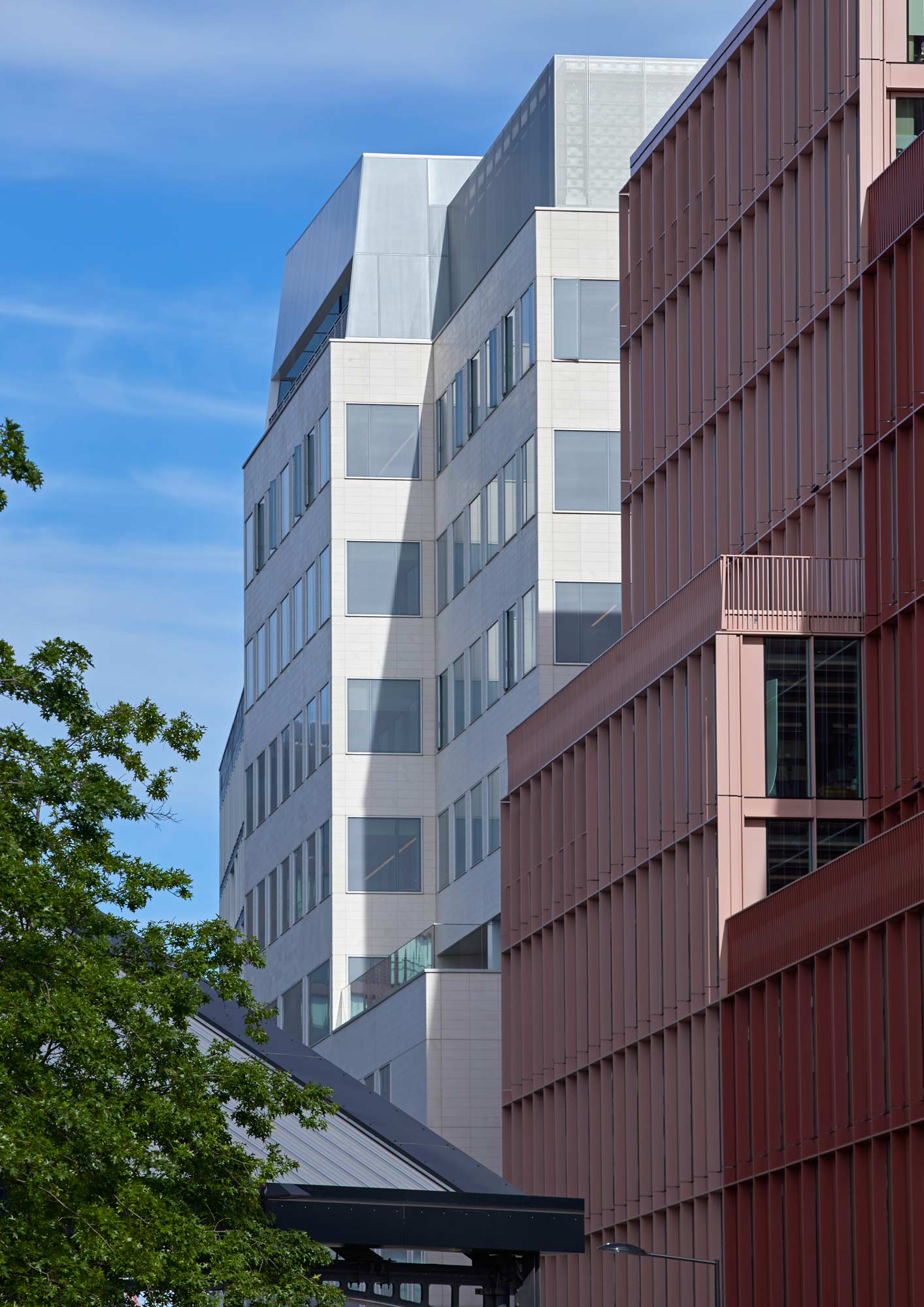
The exterior of the Aga Khan Centre.
‘If all the green spaces are relatively small, relatively secret and can be physically contained, then the overall approach gives us the opportunity to create for each space a sense of seclusion, environmental privilege and contained beauty,’ he wrote.
Gary Kamemoto, lead architect on the project and director at Maki & Associates, kept this letter on his desk throughout the entire design process, referring back to it for inspiration and guidance.
Developed into the plan are a series of terraces, gardens and courtyards. Each with different designs, influences and moods, they lift inspiration from Islamic garden traditions across the world from North Africa, Spain, Middle East, Persia and India. Maki & Associates worked with garden designers including Madison Cox, Nelson Byrd Woltz and Tom Stuart-Smith to create carefully crafted, unique feelings within each of the areas.
From the Spanish travertine-lined cloister with a purple garden of sage, rosemary and lavender; to the Syrian courtyard of red jasper tiles patterned with an abstraction of the Sufi script planted with pomegranate trees that reach up to a framed piece of sky; and the rooftop ‘community garden’ paved with Indian sandstone and planted with quince, hazelnut and wild strawberries for picking – each garden expresses a new facet of Islamic culture in an elegant and poetic way.
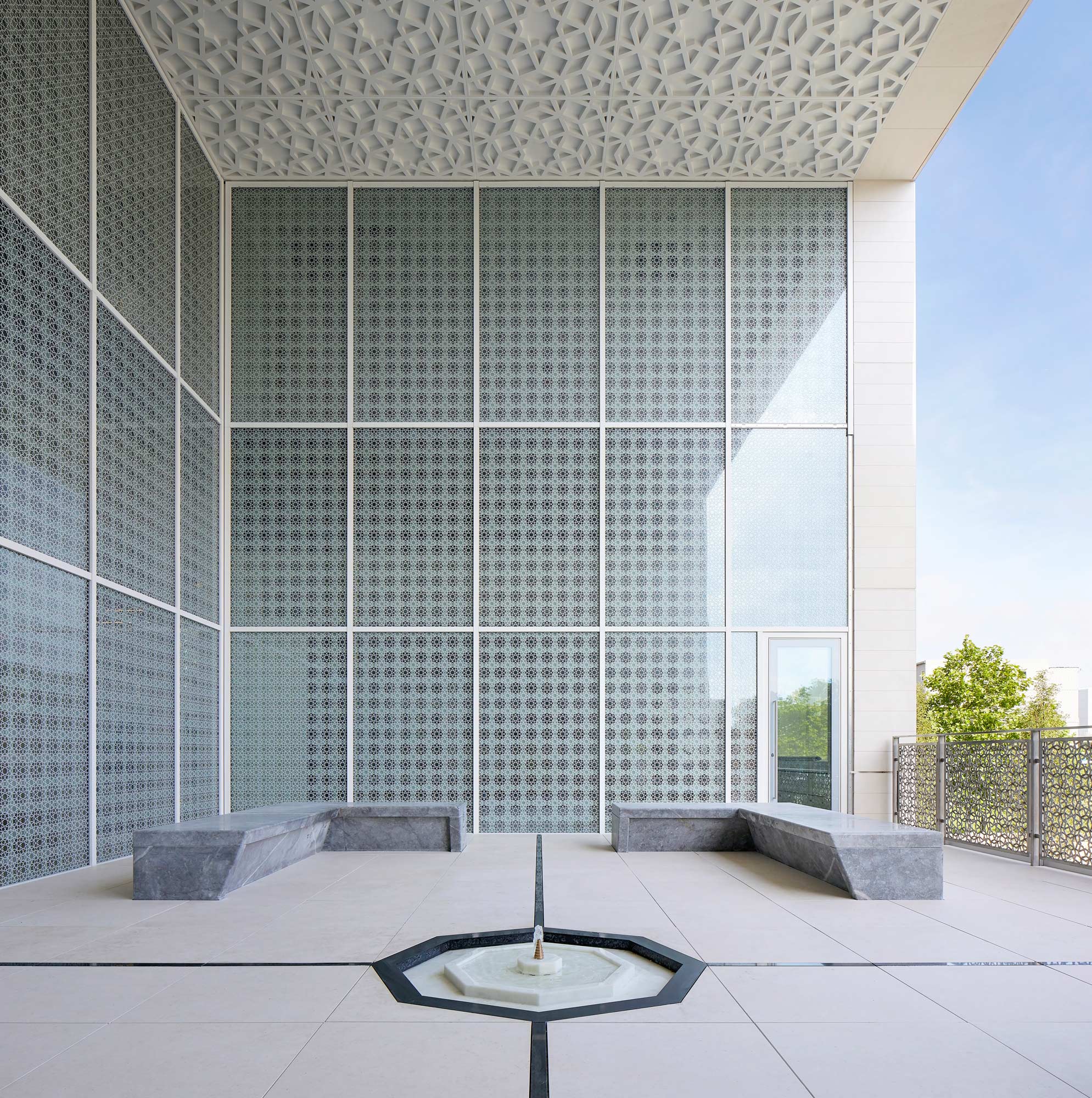
The Garden of Tranquillity, inspired by covered loggias found in the Middle East, Persia and Egypt, at the Aga Khan Centre in King’s Cross.
Kamemoto describes the Aga Khan Centre as ‘mille-feuille’ the delicately layered vanilla French pastry. ‘It’s layered vertically with different tones,’ he says of the architecture, through which the layered materials and design express the different functions within the building: the ground floor is a layer of glass, letting the building become one with public space around it – a Turkish restaurant, stationary shop, café and exhibition space will bring people into the building, while an entrance at the north and the south of the plan allows it to be a permeable thoroughfare.
The library at the centre of the ‘vertical university campus’ on the second and third floors, is expressed through a glass double-height entrance. The upper floors above, with their square windows, hold the offices, with the top floor, the icing sugar on the top, is a peak of glass and light, a ceremonial space for the Aga Kahn foundation.
The building overlooks Cubitt Square in Kings Cross, where it neatly slots into the carefully planned masterplan, that specified the size and shape limits of the architecture to allow light to street level and the preservation of historic views.
While Kings Cross has an industrial architectural history of red, brown and black bricks, Kamemoto was inspired by the use of limestone in bands around windows at St Pancras. Further research revealed that it was a Portland Limestone, present in all buildings commissioned by the British crown in London – a material that can be seen in the architecture lining the historic crossroads of Regents and Oxford street. Kamemoto searched for a material that could reflect this royal heritage in a new way, finding the Calizia Capri hard limestone in Granada and Cordoba – Spanish cities known for their Islamic architecture.
Wallpaper* Newsletter
Receive our daily digest of inspiration, escapism and design stories from around the world direct to your inbox.
In a subversion of the old buildings of central London where windows are recessed deep into their stone facades, the Aga Khan Centre’s windows sit flush against the stone in a continuous surface reflecting the modernism of a Mies van der Rohe skyscraper or a sculptural Bauhaus residence. ‘It’s a very modern building, but it's our interpretation of melding Islamic culture and the tradition of London architecture,’ says Kamemoto.
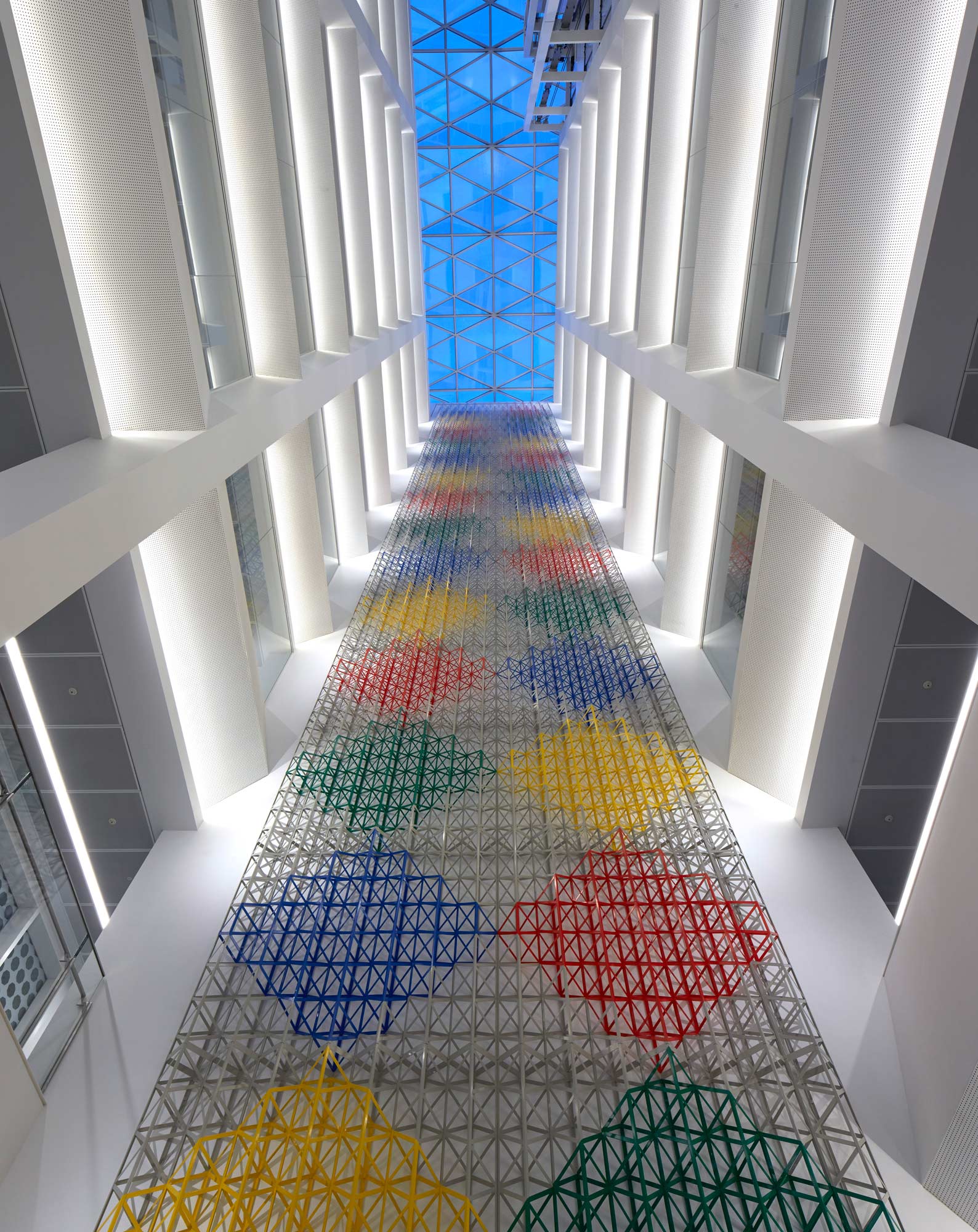
Atrium artwork ‘Rhapsody in Four Colours’ by artist, Rasheed Araeen, at the Aga Khan Centre, King’s Cross.
Inside, a silver travertine from Italy completes the flooring in the ground floor lobby and the central staircase that leads up to the first floor atrium. A huge artwork pulses 40m through heart of the building. The colourful waterfall of primary coloured gridded shapes is designed by Rasheed Aareen, a UK-based Pakistani artist, who was selected from a design competition.
Geometric patterning inspired by Islamic decorative art was used creatively by the architects across the building. For each out of the three buildings the architects have designed for the Aga Khan, Maki & Asociates have designed a unique pattern. At the Aga Khan centre in London, the pattern is based upon an octagonal shape, seen at first entry, repeating across the glass ground floor facade. Playing with the one-inch air gap between the insulated glass, the architects layered the opaque pattern twice, creating a three-dimensional pattern enhanced by light and shadow that hints at the Jali, the traditional Islamic screen. The pattern can be seen again in many different instances across the building such as embedded into the carpet, printed across material or carved into stone.
The Aga Khan Centre opens on 22 September 2018.
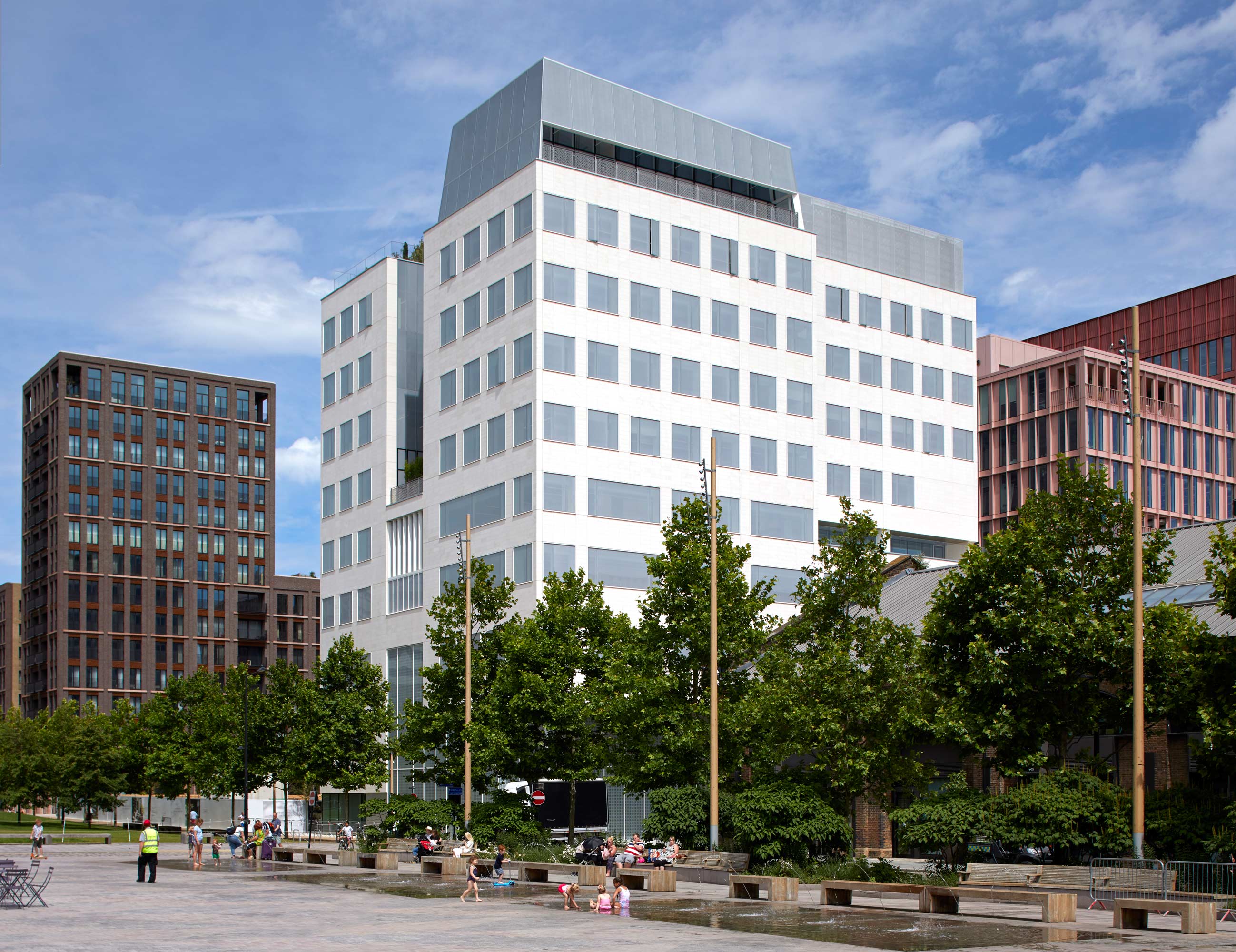
Aga Khan Centre viewed from the south west.
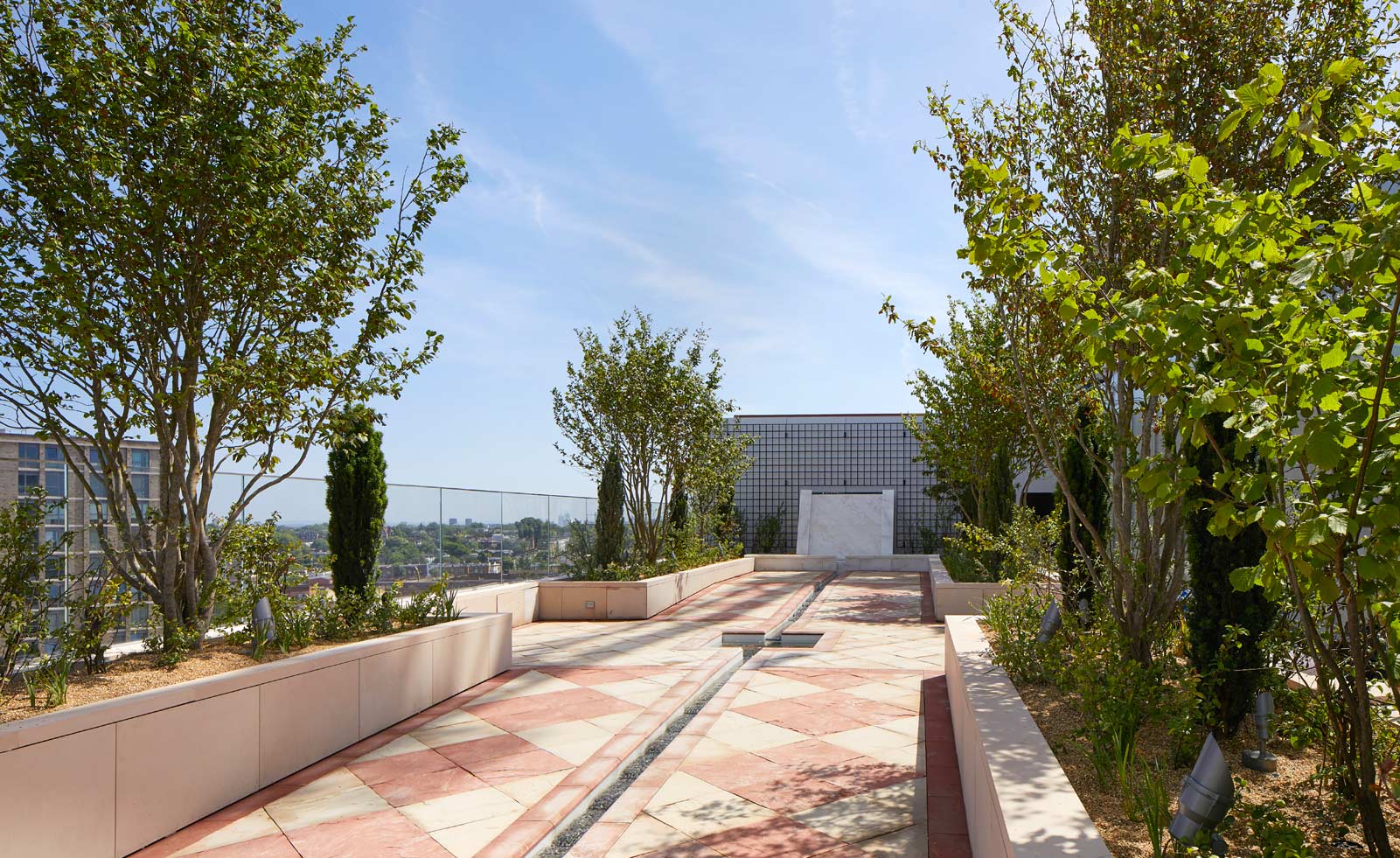
The ‘Garden of Life’ inspired by the gardens of the Mughal empire, at the Aga Khan Centre in King’s Cross.
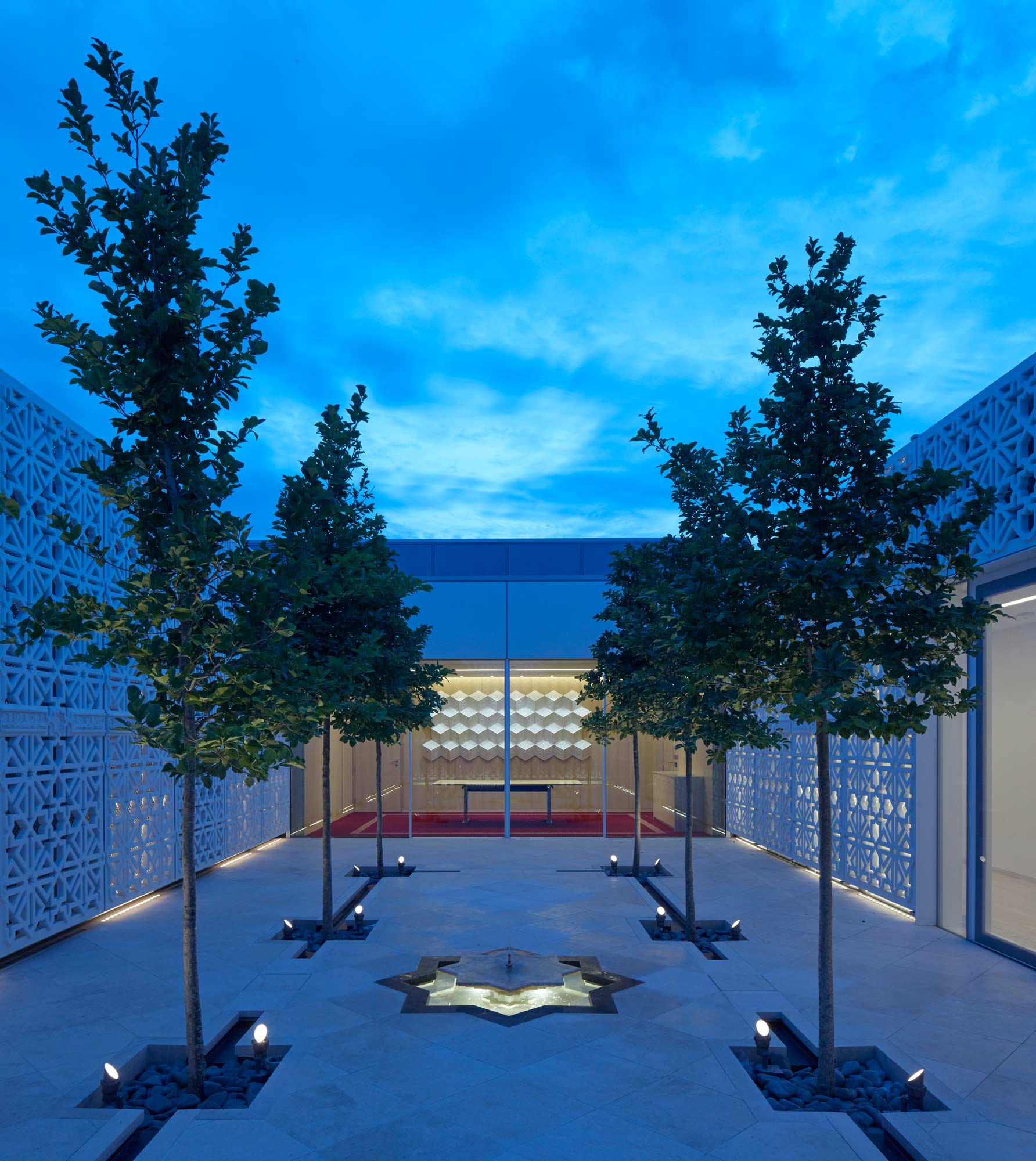
The ‘Garden of Light’ inspired by Islamic courtyards of Spain, at the Aga Khan Centre in King’s Cross.
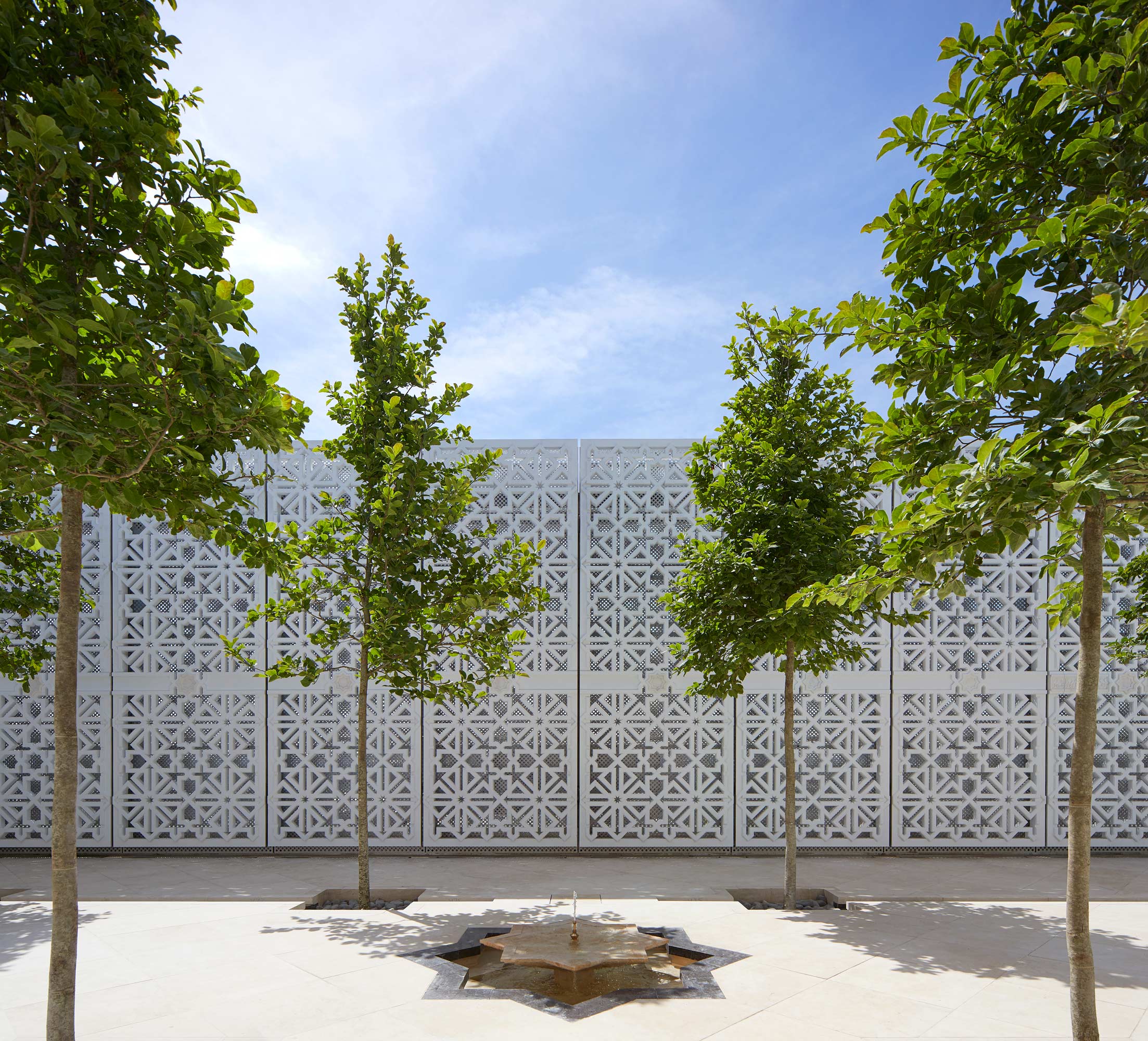
The ‘Garden of Light’ inspired by Islamic courtyards of Spain, at the Aga Khan Centre in King’s Cross.
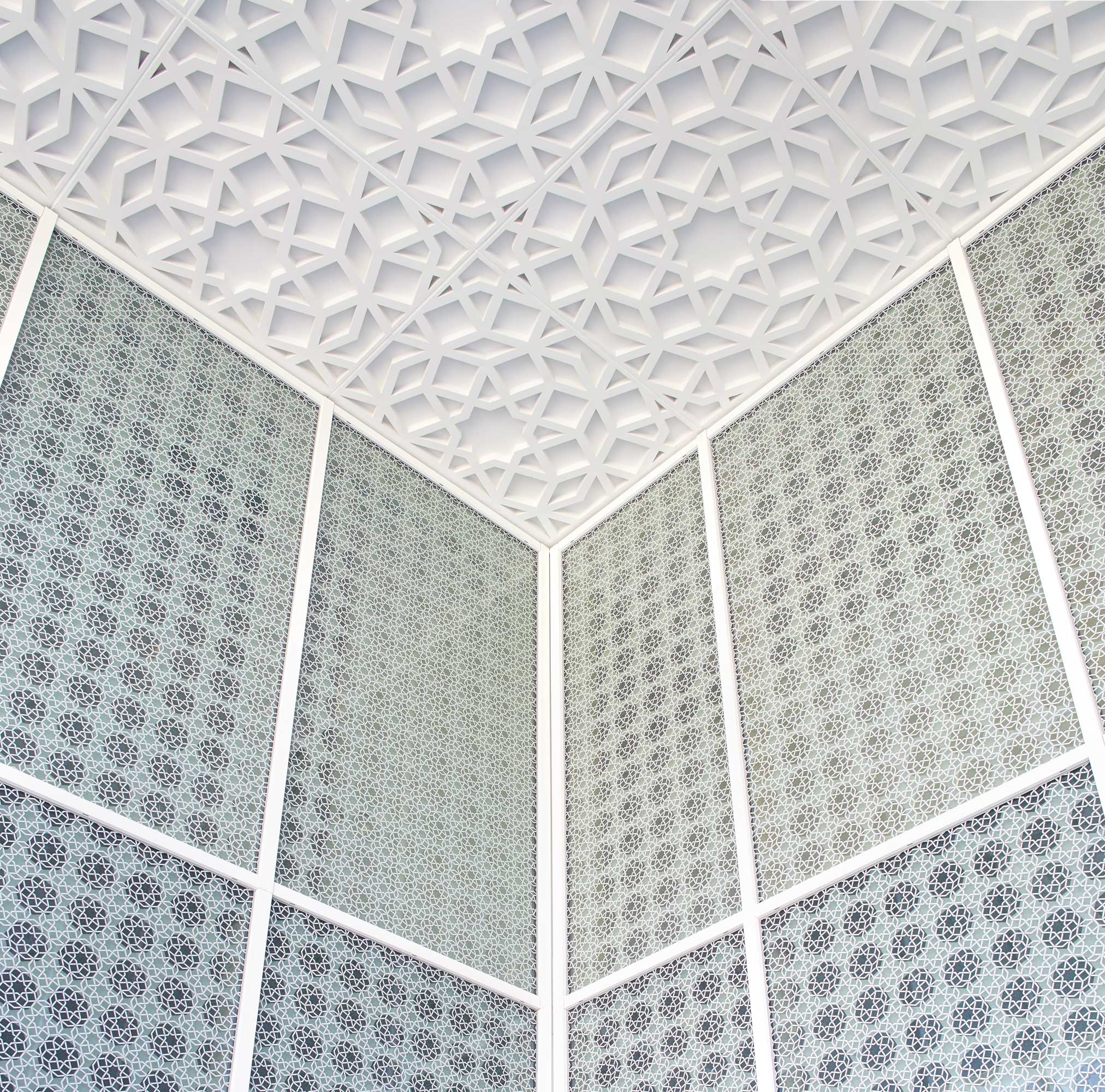
Ceiling detail of the ‘Garden of Tranquillity’ inspired by covered loggias found in the Middle East, Persia and Egypt, at the Aga Khan Centre in King’s Cross.
INFORMATION
For more information, visit the Maki & Associates website and the Aga Khan Centre website
Harriet Thorpe is a writer, journalist and editor covering architecture, design and culture, with particular interest in sustainability, 20th-century architecture and community. After studying History of Art at the School of Oriental and African Studies (SOAS) and Journalism at City University in London, she developed her interest in architecture working at Wallpaper* magazine and today contributes to Wallpaper*, The World of Interiors and Icon magazine, amongst other titles. She is author of The Sustainable City (2022, Hoxton Mini Press), a book about sustainable architecture in London, and the Modern Cambridge Map (2023, Blue Crow Media), a map of 20th-century architecture in Cambridge, the city where she grew up.
-
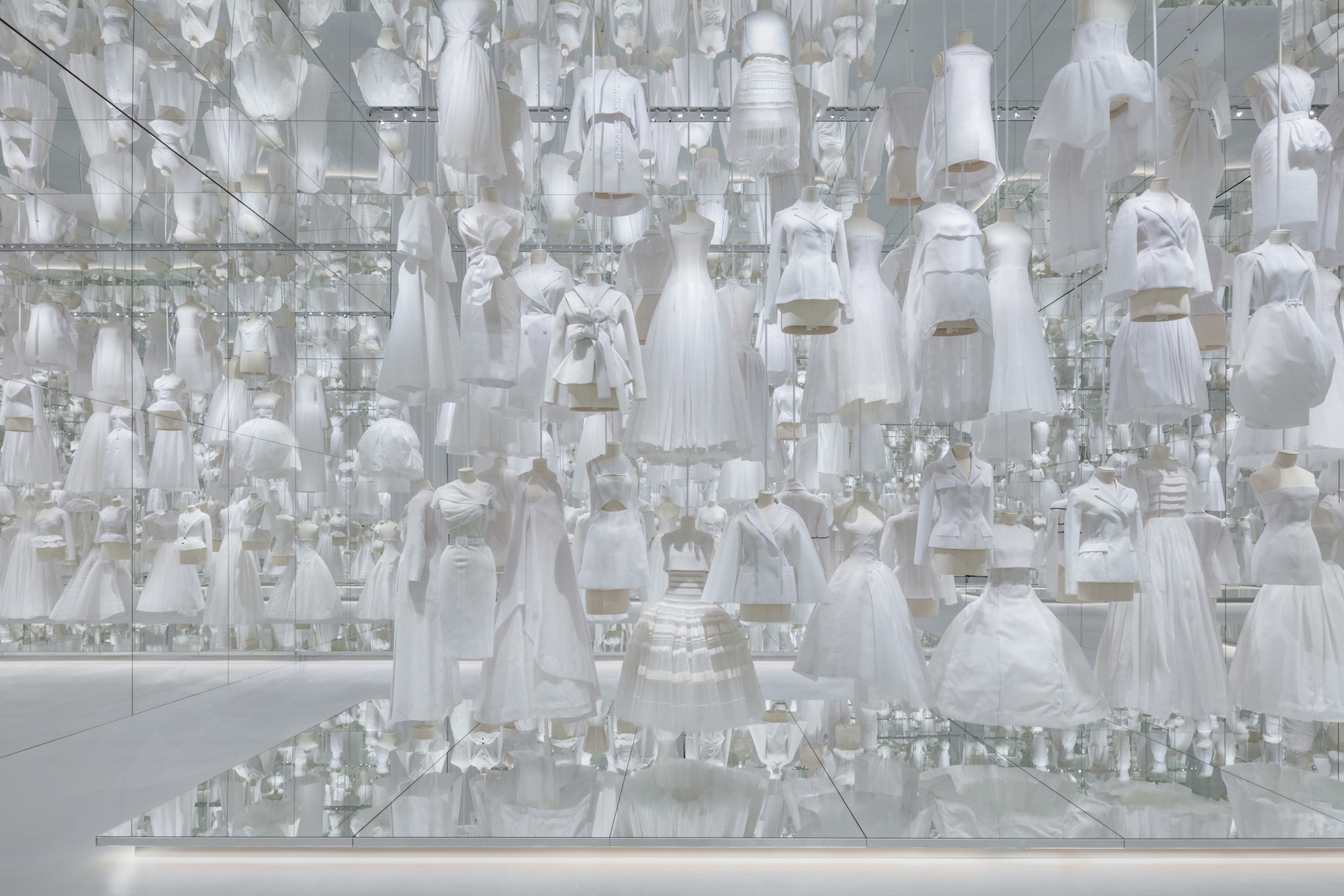 With scenography by OMA, Dior’s ‘Designer of Dreams’ exhibition in Seoul is ‘a piece of theatre’
With scenography by OMA, Dior’s ‘Designer of Dreams’ exhibition in Seoul is ‘a piece of theatre’OMA partner Shohei Shigematsu catches up with Wallpaper* about the dramatic show design for the latest iteration of ‘Christian Dior: Designer of Dreams’, which opened in Seoul this weekend
By Daven Wu
-
 Mercedes-Benz previews its next-gen people mover with an ultra-luxury EV concept
Mercedes-Benz previews its next-gen people mover with an ultra-luxury EV conceptThe Mercedes-Benz Vision V Concept is an art deco picture palace on wheels, designed to immerse passengers in parallel worlds as they travel
By Jonathan Bell
-
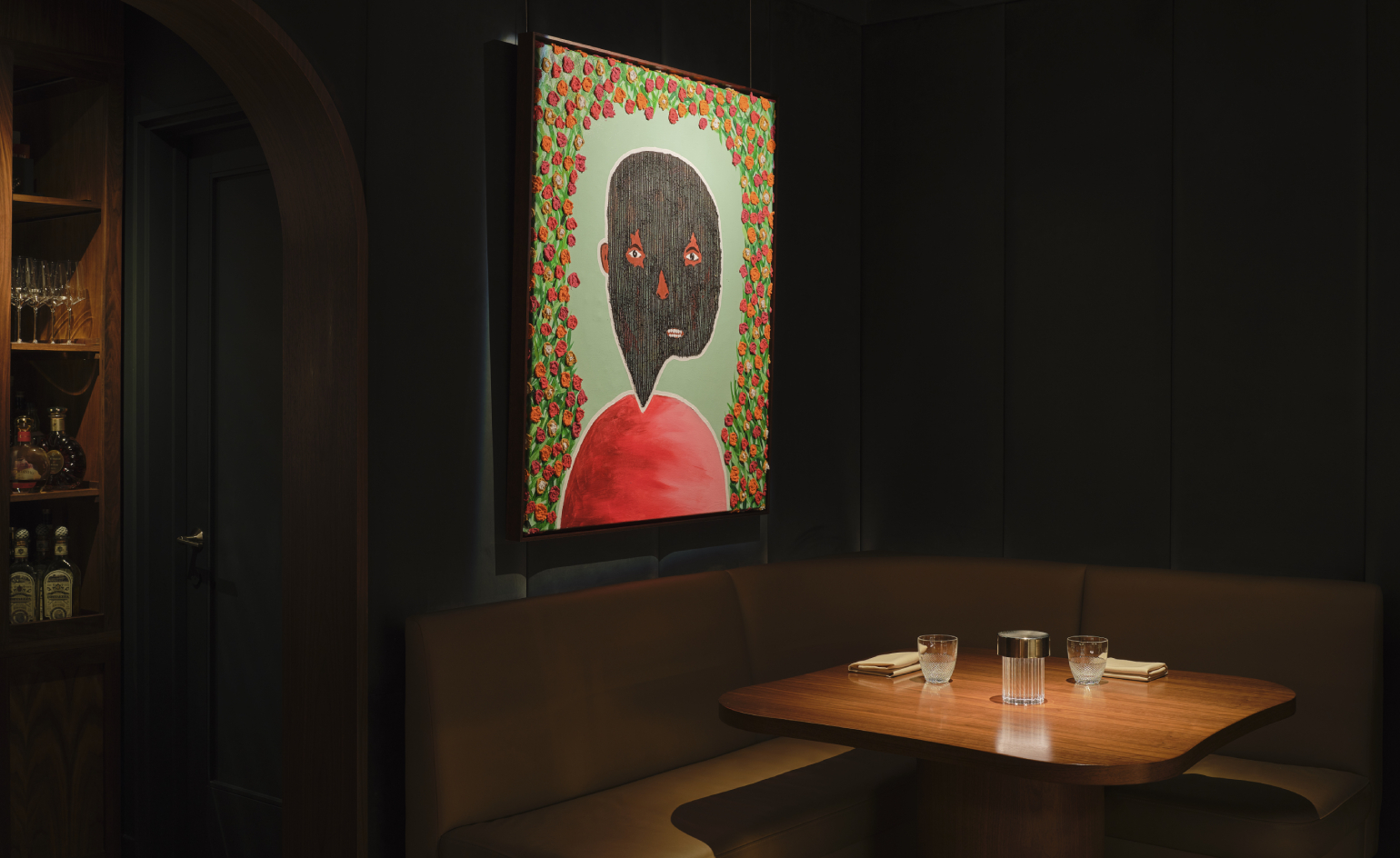 Visit this Michelin-star New York restaurant that doubles as an art gallery
Visit this Michelin-star New York restaurant that doubles as an art galleryArtist Mr.StarCity is exhibiting his emotionally charged yet optimistic ‘Bloomers’ portrait series at Frevo, a Greenwich Village hidden haunt
By Adrian Madlener
-
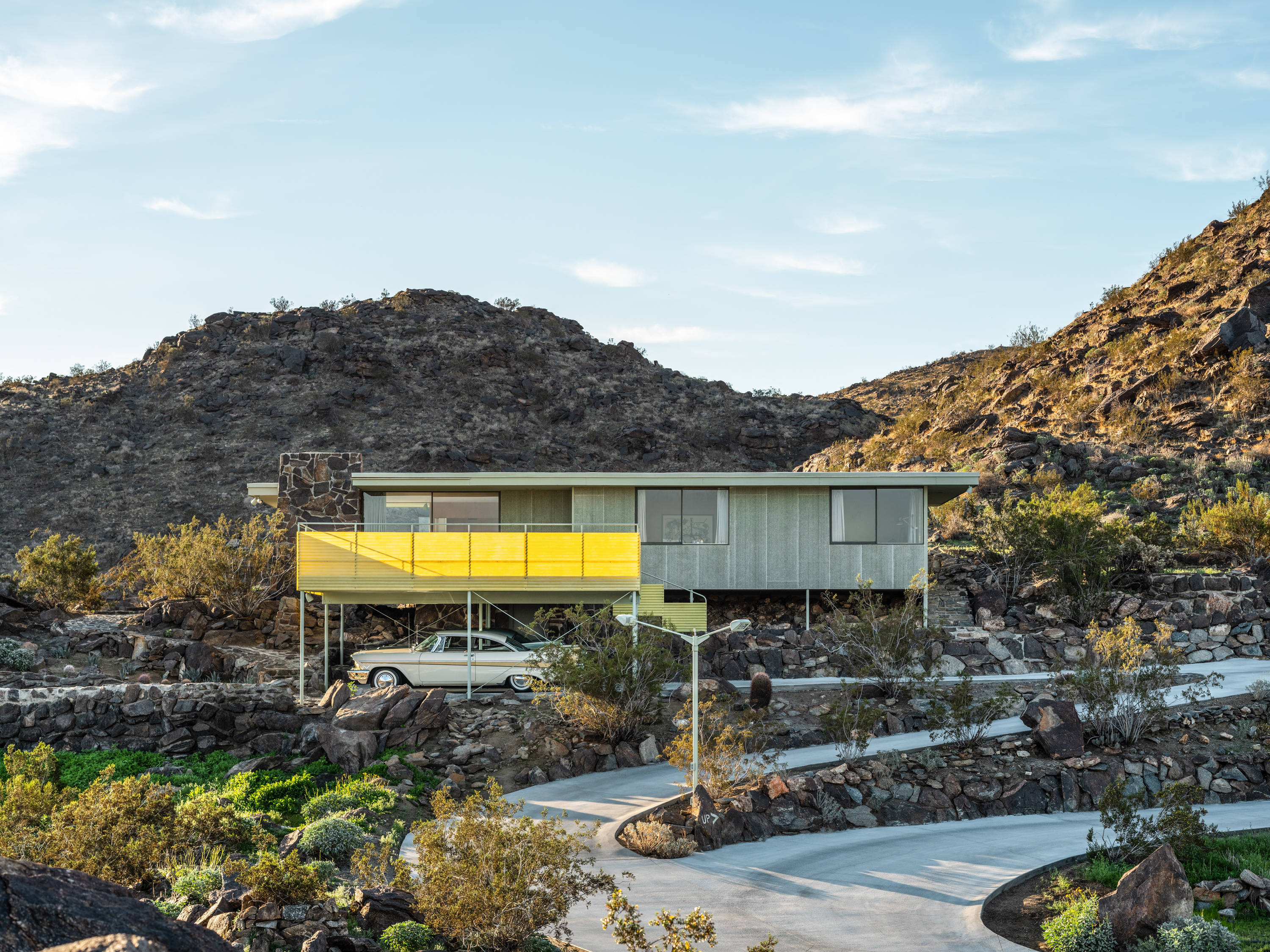 Modernist architecture: inspiration from across the globe
Modernist architecture: inspiration from across the globeModernist architecture has had a tremendous influence on today’s built environment, making these midcentury marvels some of the most closely studied 20th-century buildings; here, we explore the genre by continent
By Ellie Stathaki
-
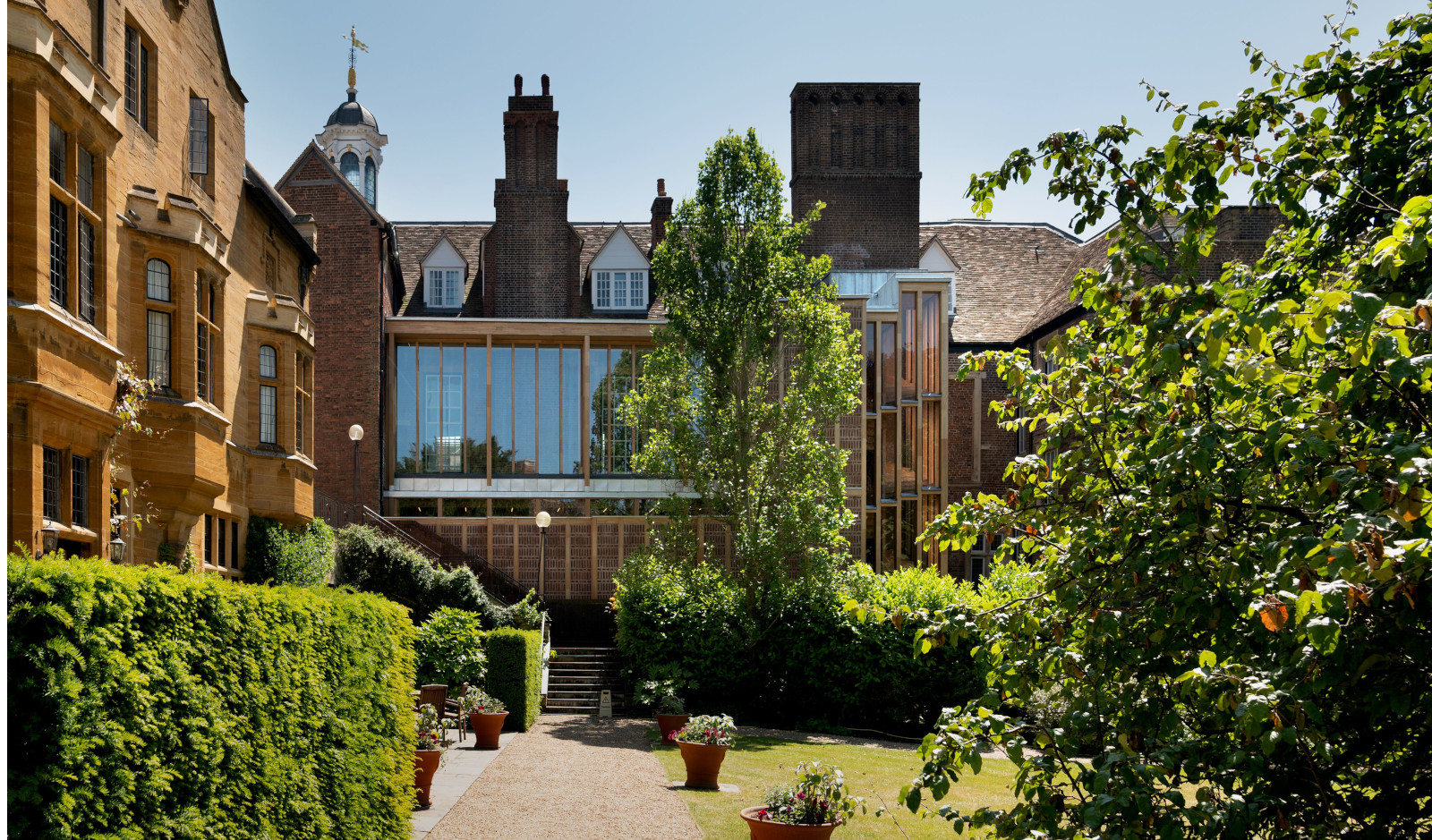 River Wing at Clare College responds to its historic Cambridge heritage
River Wing at Clare College responds to its historic Cambridge heritageUniversity of Cambridge opens its new River Wing on Clare College Old Court, uniting modern technology with historic design
By Clare Dowdy
-
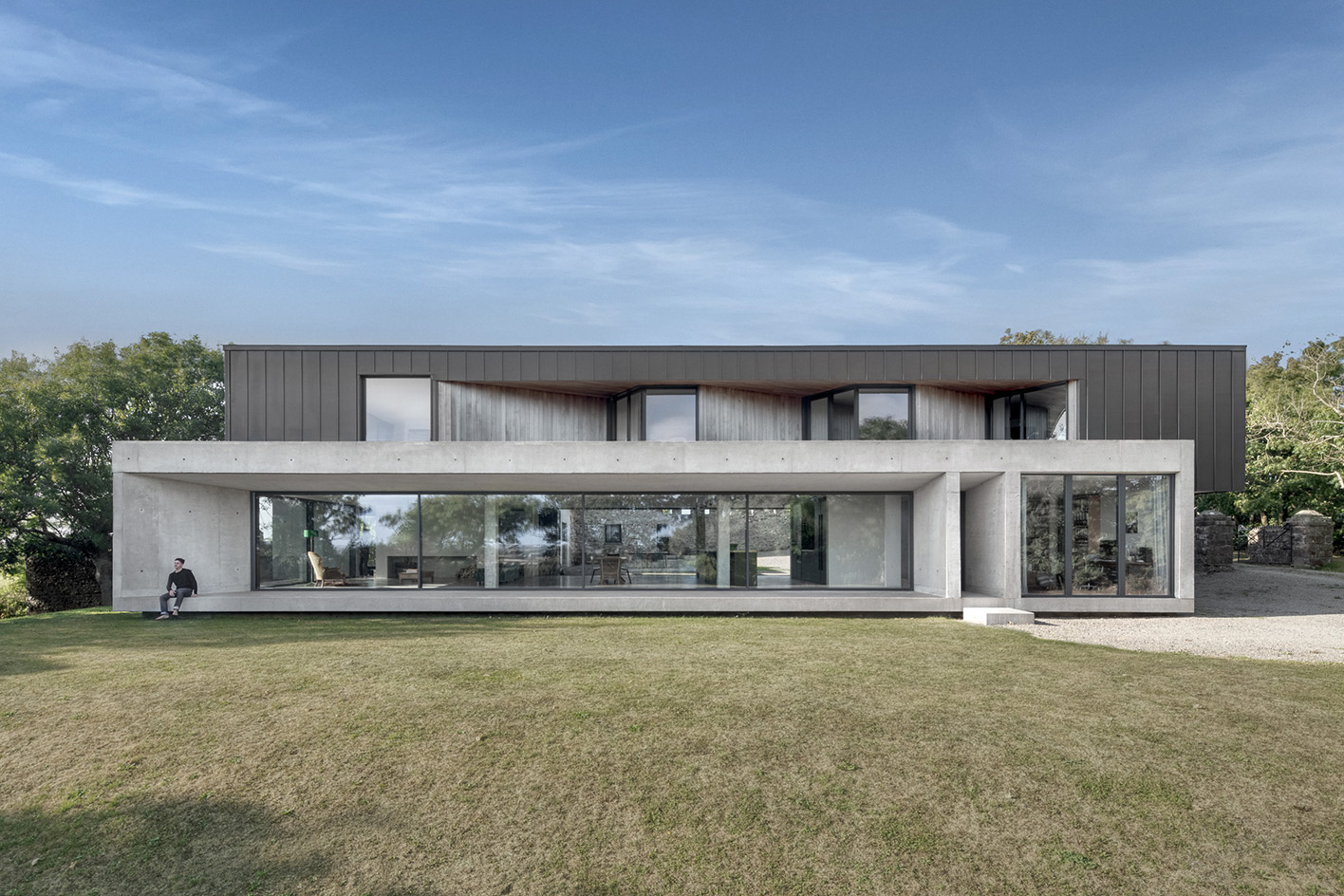 Minimalist architecture: homes that inspire calm
Minimalist architecture: homes that inspire calmThese examples of minimalist architecture place life in the foreground – clutter is demoted; joy promoted
By Ellie Stathaki
-
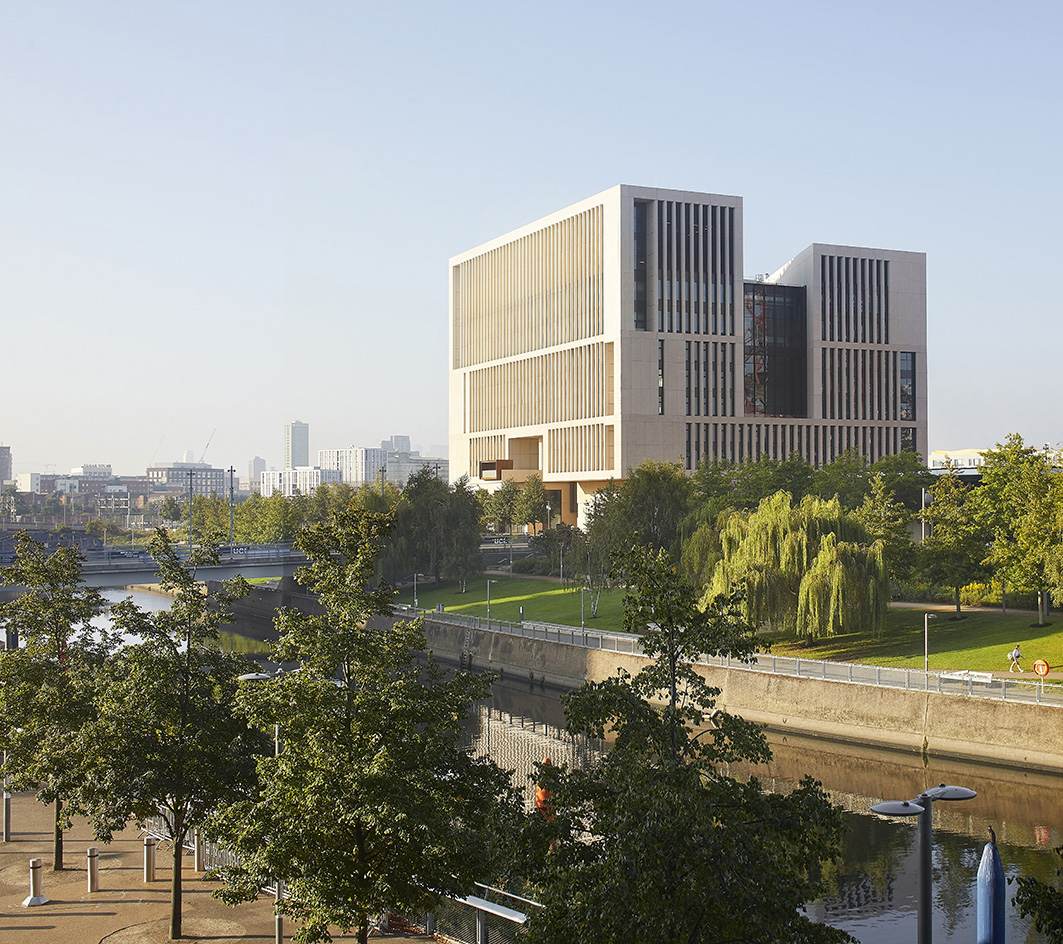 UCL East Marshgate seeks to redefine the university campus of the future
UCL East Marshgate seeks to redefine the university campus of the futureUCL East Marshgate by Stanton Williams is completed and gears up to welcome its students in east London
By Ellie Stathaki
-
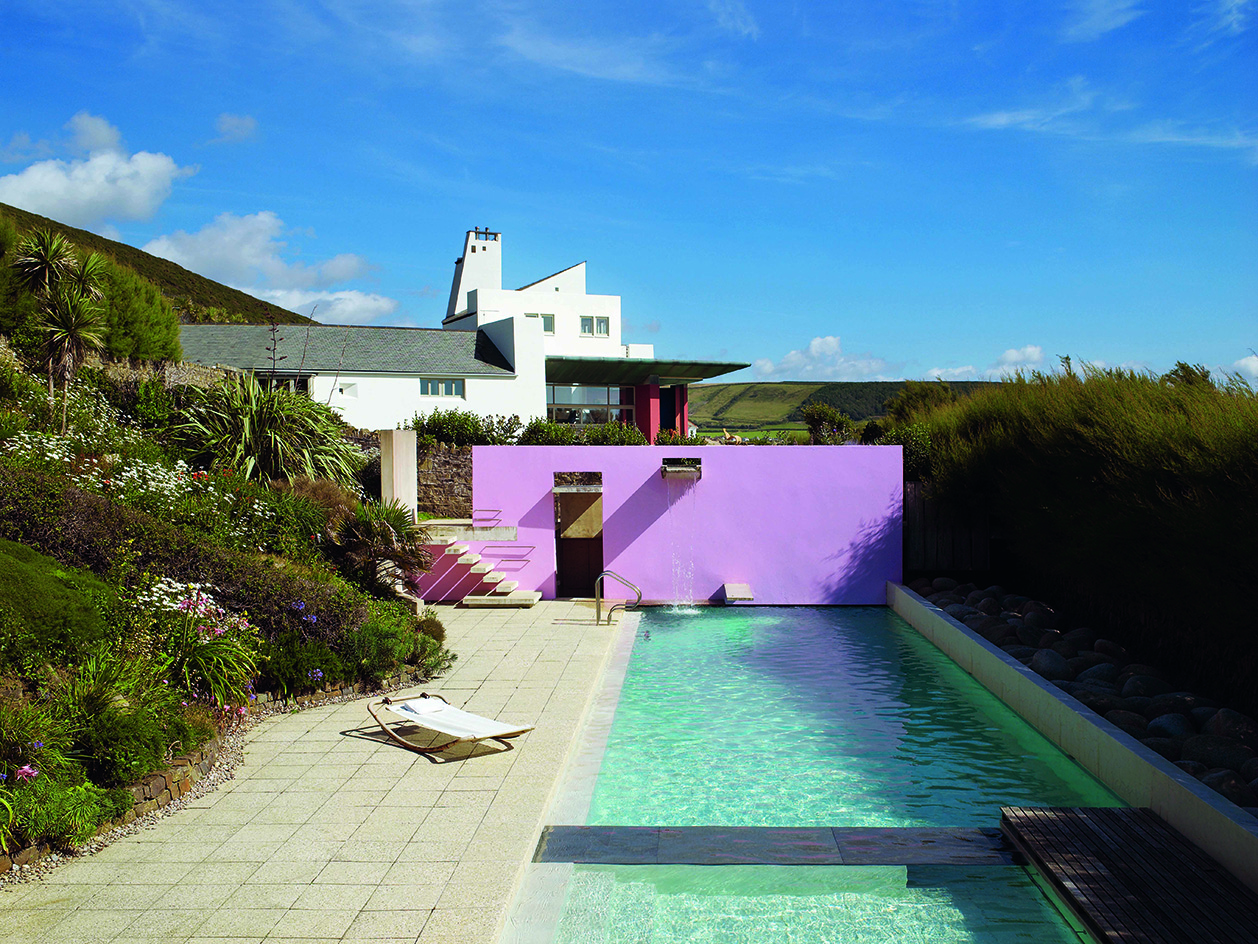 The iconic British house: key examples explored
The iconic British house: key examples exploredNew book ‘The Iconic British House’ by Dominic Bradbury explores the country’s best residential examples since 1900
By Ellie Stathaki
-
 Loyle Carner’s Reading Festival 2023 stage presents spatial storytelling at its finest
Loyle Carner’s Reading Festival 2023 stage presents spatial storytelling at its finestWe talk to Loyle Carner and The Unlimited Dreams Company (UDC) about the musical artist’s stage set design for Reading Festival 2023
By Teshome Douglas-Campbell
-
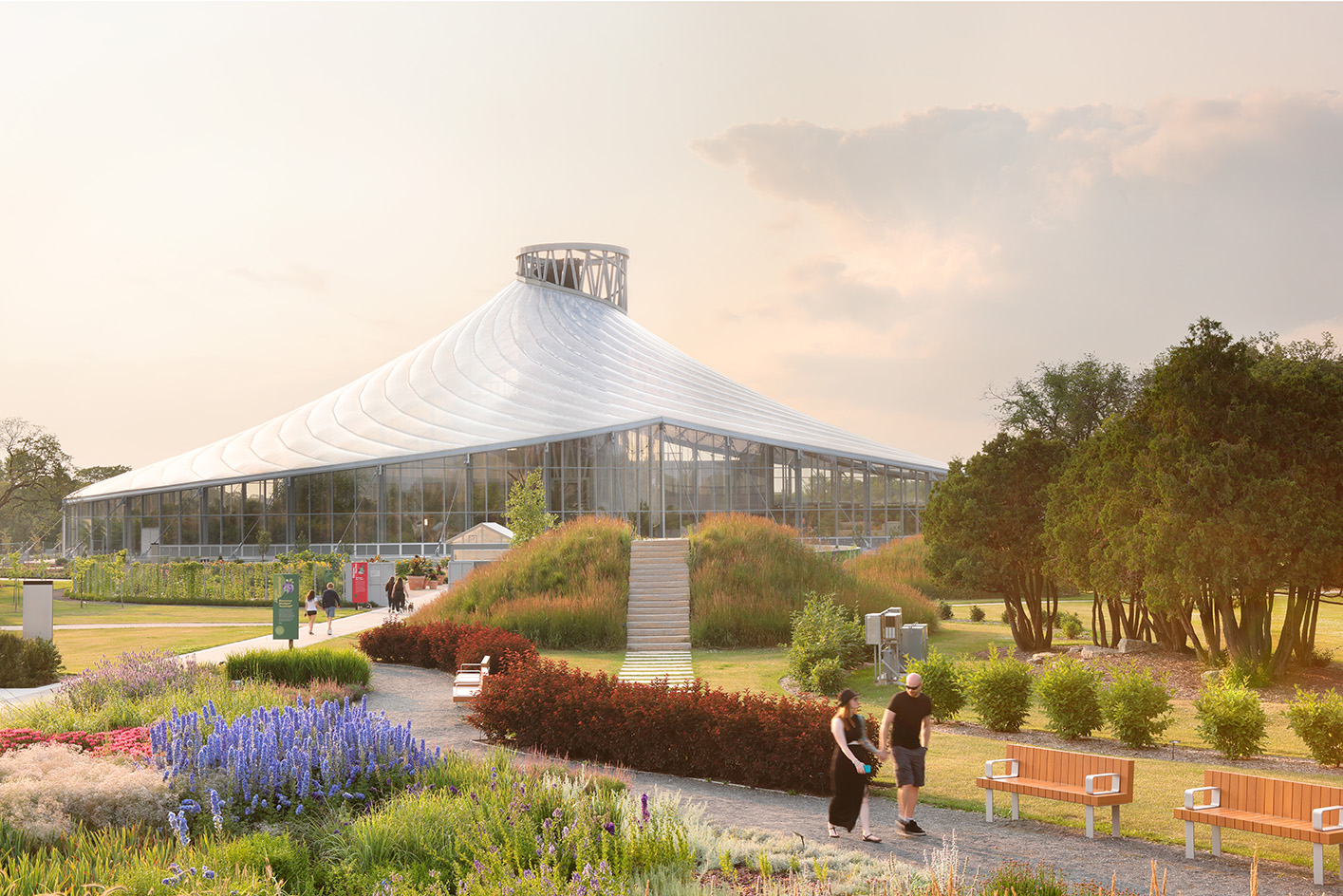 The Leaf is a feat of engineering and an ode to the Canadian Prairies
The Leaf is a feat of engineering and an ode to the Canadian PrairiesThe Leaf in Winnipeg, Canada, is the first interactive horticultural attraction of its kind: a garden and greenhouse complex promoting a better understanding of how people can connect with plants
By Adrian Madlener
-
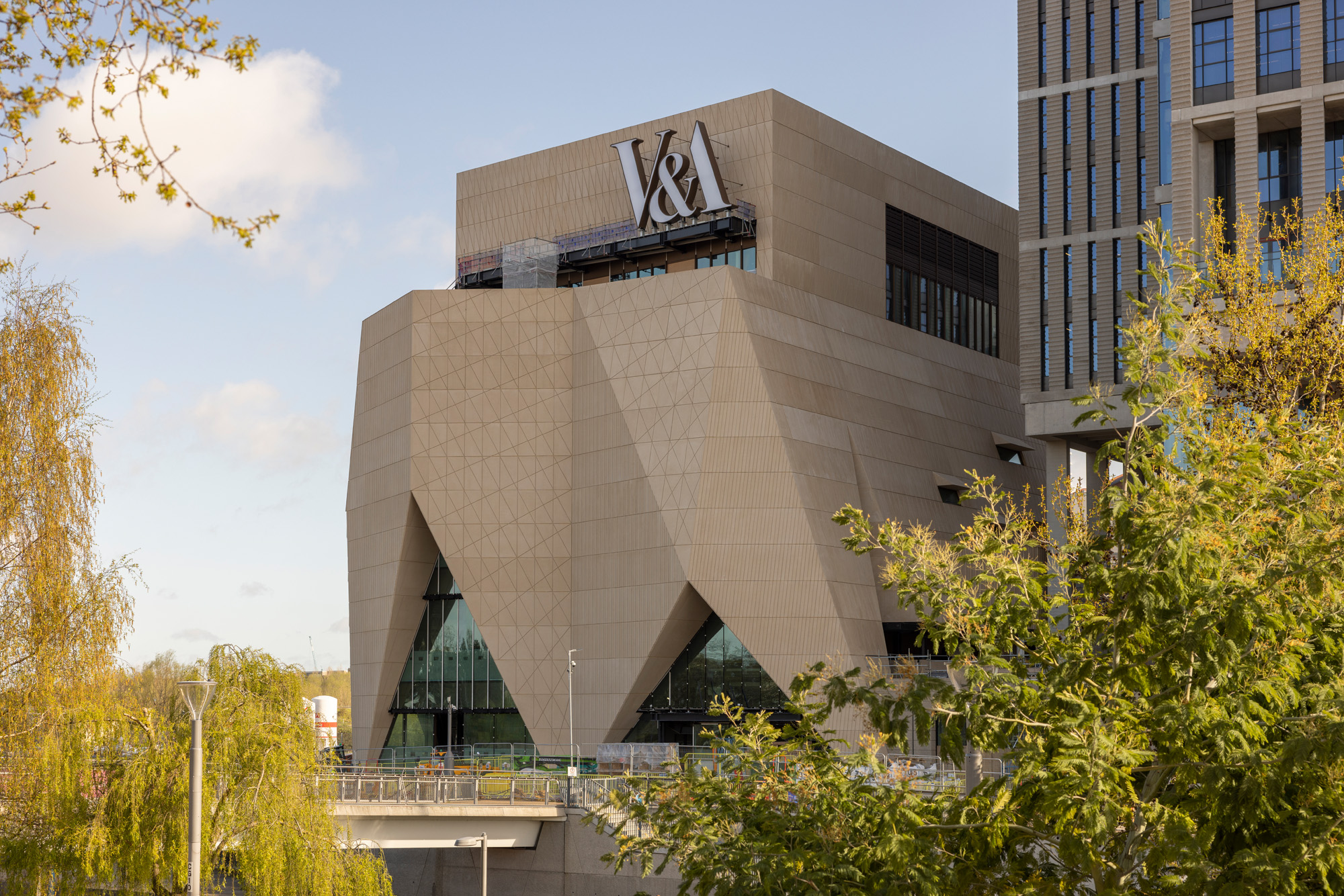 Behind the V&A East Museum’s pleated façade
Behind the V&A East Museum’s pleated façadeBehind the new V&A East Museum’s intricate façade is a space for the imagination to unfold
By Ellie Stathaki